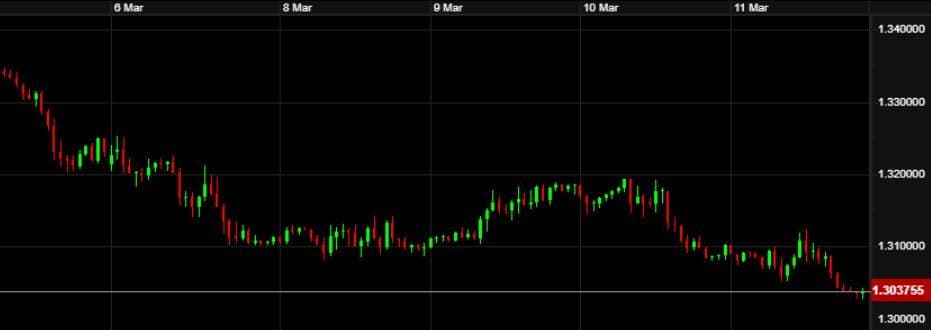ACM Update 14-03-22

As the terrible scenes coming out of Ukraine continued last week, the major global economies began to digest how the ongoing invasion would be impacting their home markets. The expected answer for now… stagflation.
To quote the market newsletter from a certain D Comber on 20th September last year, this is “stagnant economic growth, combined with high inflation”. Six months ago, stagflation was a slight concern as countries emerged from the pandemic, but now there are wide expectations of a period of recession, especially in countries such as the US. With inflation running high and major concerns about growth due to the war in Ukraine, stagflation is now very much a reality.
Speaking of the US and inflation, the latest figures for February were released last week. Year on year the cost of goods and services is now up 7.9%, a further 40-year high on this metric. Even more concerning is that these figures are barely impacted by the war in Ukraine, which sparked at the end of February and will thus impact the March numbers. With prices at the pump on the rise all over the world, US inflation is likely to be well over 8% when the next set of numbers land in a month’s time.
The main driver for the Dollar at the moment continues to be its safe haven status, which drove GBP-USD down to the lowest level since November 2020, as we get closer to testing the 1.30 barrier. More crucially, the Federal Reserve meet this week on Wednesday at 6pm UK time (an hour earlier than usual in the UK due to the US putting the clocks forward over the weekend). Expectations have been of a rate rise of 0.5% since the last meeting, but will the war in Ukraine impact their roadmap? Movements last week on GBP-USD can be seen in the chart below:

On the UK side of the equation, sterling-Euro almost hit the dizzy heights of 1.22 at the beginning of last week, albeit briefly. The move pushed the pair to the highest level since the final week of June 2016. For those who remember, that was just a matter of days after the EU Referendum, which frankly feels like a lifetime ago!
But that was as good as it got for GBP-EUR last week. The sterling positivity short-lived as sanctions and financial restrictions on Russian-linked individuals and entities were rolled out. This saw the pair slide by a total of 2.75% by Thursday lunchtime, all the way back down to the mid 1.18 bracket. Sterling received a slight boost on Friday morning off the back of the better-than-expected GDP numbers for January. The economy grew by 0.8% for the month, bouncing back from the -0.2% seen in December. Moves last week can be seen below:

Concerns now are again in the direction of stagflation, with inflation set to soar as the energy price cap is removed, and prices at the pump going through the roof due to the cost of oil rising. Growth forecasts are likely to be cut, but we still expect an interest rate rise from the Bank of England when they meet again this Thursday lunchtime. This is largely priced into the market though, so might not necessarily produce much of an uplift.
Over in the Eurozone, Christine Lagarde and her colleagues at the ECB remain perched in a similar position to where they have been now. That is very much perched on the fence! Her main statement being “we will take as much time as necessary to examine any rate hike decision”. Brussels believe that there will be no recession in Europe however, but concede that the Ukraine situation will cause a “risk to the economic outlook”. That could well be an understatement, we shall wait and see.
Elsewhere, the meteoric rise in commodity prices caused by the Russian invasion has been creating havoc for certain currencies which largely track their movements. The Australian Dollar, New Zealand Dollar and Norwegian Krone to name but a few, have all seen circa 5% gains in the last month as the price of oil, gold and other major commodities have soared. This is a position unlikely to reverse any time soon and may impact trade longer term for such currencies.
The Aussie Dollar has been further supported by strong growth in the country over recent months. This has been partly supported by opening up of border restrictions recently, but overall, the economy is performing well too with inflation currently a modest 2.6%. RBA Governor Phillip Lowe commented that wages are only growing slowly, but did open the door for at least the potential of an interest rate hike this year. That picture has shifted considerably over the last six months.
Next week’s major events:
Tuesday – Reserve Bank of Australia Monetary Policy Minutes (12:30am UK), UK Unemployment & Claimant Count data (7am)
Wednesday – Federal Reserve interest rate announcement (6pm)
Thursday – Bank of England interest rate announcement (midday)
Friday – Canadian Retail Sales (12:30pm)
So a slightly quieter week with two major interest rate announcements from the Federal Reserve and Bank of England. The former is playing catch up having been cautious. The latter is on the brink of raising interest rates in three consecutive meetings for the first time since the summer of 1997 (if my statistics are correct)!
The recent moves in the Dollar have impacted a lot of clients. If you fall into this category, then please do reach out via d.comber@astoncm.com to discuss your options going forwards. Equally, any pending requirements you may have on the horizon, now is a crucial time for us to be aware of your upcoming needs so we can react accordingly.
It is likely to be a busy week around Wednesday and Thursday especially, so please do raise any queries you might have.
Stay safe and have a great week.